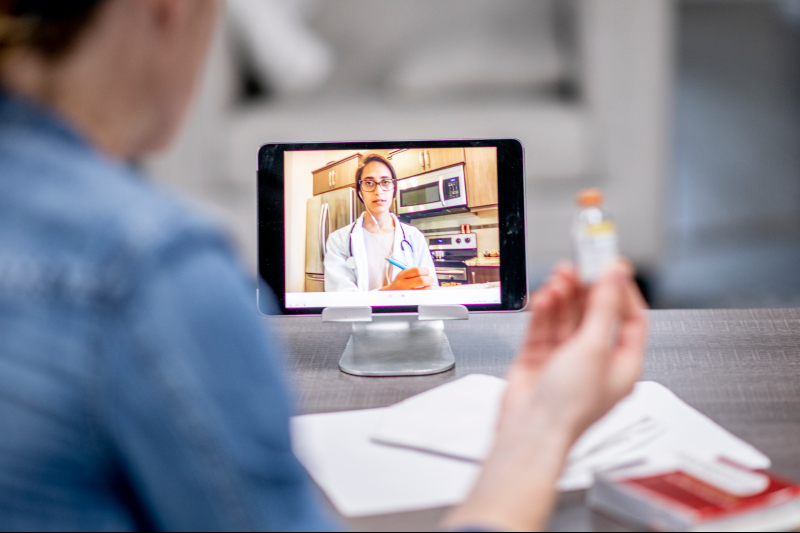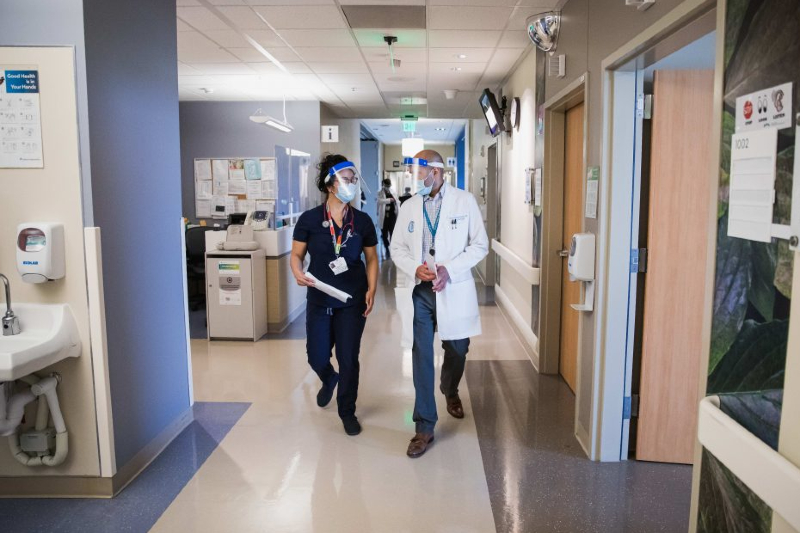PermanenteDocs Chat podcast on flu, COVID, and RSV vaccine safety and effectiveness updates with Sandra Fryhofer, MD, of the American Medical Association.

Physicians and care team members can connect with diabetes patients through virtual visits for safe, frequent check-ins to help control their diabetes.
COVID-19 pandemic spurs evolution in diabetes care management
By John P. Martin, MD, FACP

In 2020, physicians have learned a lot about SARS-CoV2. But we’ve also learned a lot about the way we deliver care to our patients beyond COVID-19.
The current pandemic, which nobody expected and nobody wanted, has caused many in health care to pivot in many ways, from the way we protect ourselves and our patients when in health care settings to the way we manage routine care remotely. My field of diabetes care management is also changing.
Nearly 1 out of 3 Americans either suffers from diabetes or lives with prediabetes. This population is especially vulnerable during the pandemic because they are at a higher risk of serious complications and death due to COVID-19. That’s why it’s critical for patients to work with their care teams to ensure they’re properly managing their diabetes.
As co-director of diabetes management at Kaiser Permanente in Southern California, I worked with my team to find solutions to help our patients stay on top of their health during the pandemic while addressing safety concerns about simple tasks such as going to the lab to test their latest A1c numbers.
The processes we developed to avoid face-to-face care have transformed the way we approach diabetes care management. What we’ve found is the model of the physician as the primary point of contact for diabetes care is no longer relevant. The paradigm is shifting to an entire care team working with patients virtually and remotely, which can still result in quality outcomes.
Remote glucose monitoring
Virtual visits and remote patient monitoring were key to our response. Phone and video visits helped our physicians and care team members stay connected to diabetes patients, and virtual classes were always a consideration but had to quickly become reality because of the pandemic. Kaiser Permanente also had an established remote monitoring program to check on blood sugar for diabetes patients, primarily through an app that members can use on their smartphones with a Bluetooth-enabled glucometer.
With the onset of the pandemic, there was a push to enroll more members with diabetes in the remote monitoring program. Across the organization, there are now more than 60,200 patients in the program — a nearly 53% increase compared to 39,479 in February before the onslaught of COVID-19.
Remote monitoring allows us to recognize early on when there should be adjustments to a patient’s treatment and care plan based on their latest numbers sent using the app. With diabetes patients, it’s all about controlling their numbers; remote monitoring lets us proactively adjust medications instead of waiting for the patient to come in for a follow-up visit.
The COVID-19 pandemic has forced us to look at new models of care, especially among chronic conditions.
Connecting with patients through the remote program helps them avoid forgetting or misunderstanding health care advice. In a study published in JAMA Network Open in February 2020, research scientists at Kaiser Permanente reported that diabetes patients who used the organization’s patient portal and mobile phone app improved their diabetes management outcomes.
Under the older, traditional model of care, the patient would typically come in for a doctor’s visit once every 6 to 8 weeks but perhaps as infrequently as once every 6 months, depending on how well the patient’s condition was under control. As we move to newer models of virtual diabetes management, we’re likely to stay in touch with patients more often and likely to keep their diabetes controlled. If they’re out of control, we can make adjustments in their care plans remotely, reducing the number of times they need to physically come in to see the doctor.
Patients have traditionally looked to the doctor as the key to their success in managing their diabetes — but how much depends simply on the doctor? In most health care systems, the doctor will make the initial assessment, do routine foot exams, and enter the proper coding for diagnostic accuracy. But between those times, much of the daily management of a patient’s diabetes is performed by other health care professionals such as pharmacists and nurses managing medications and nutritionists developing meal plans and fitness activities.
Doctor as ringmaster
The success of diabetes patients managing this ongoing health condition relies on an entire care team. Today, the doctor is more of a ringmaster, supervising the coordination of care. There is less need for frequent office visits and more focus on the ancillary care such as medication management and lifestyle behavioral changes that can help patients control their diabetes.
Kaiser Permanente’s integrated care model, supported by one of the world’s largest electronic health records, allows physicians partnered with diabetes care managers to better coordinate care with patients, including monitoring vitals, adjusting medications, and scheduling regular follow-ups — all of which can now be done virtually. Through our integrated model, we can also take into account social determinants of health in assessing a patient’s ability to manage his or her health.
Technology continues to evolve in the field, and we continue to look at how we can improve our digital strategy to support diabetes patients with friendlier navigation and more personalization on our website. Through the practice of Permanente Medicine, we’re always reviewing new applications to improve care management and move diabetes care forward.
While much of the focus can sometimes fall too heavily on advancing technology, it is always critical for health care to not leave patients behind. We need to ensure that even after the pandemic, we as health care professionals continue to address social disparities based on race, ethnicity, and social economics factors that have an effect on health, and provide care that “meets the patients where they are” in addressing their health needs.
The COVID-19 pandemic has forced us to look at new models of care, especially among chronic conditions. The patient still wants to see the smile of a doctor, maintaining that connection of trust. But periodic in-person visits can be supplemented and enhanced with phone or video for safer, more efficient follow-ups.
Regular contact, whether in person or virtually, will help our patients feel supported and set them up for success. People get better when the messages we share inspire them to improve their self-care. Diabetes care management of the future should be a blend of safe and frequent electronic interventions balanced with targeted face-to-face encounters in order to make care accessible with the personal touch.
John P. Martin, MD, FACP, is an internal medicine physician with the Southern California Permanente Medical Group, practicing at Kaiser Permanente Los Angeles Medical Center. He serves as co-director of the Diabetes Complete Care Program in Kaiser Permanente in Southern California, and is the clinical national diabetes guideline lead at Kaiser Permanente.

